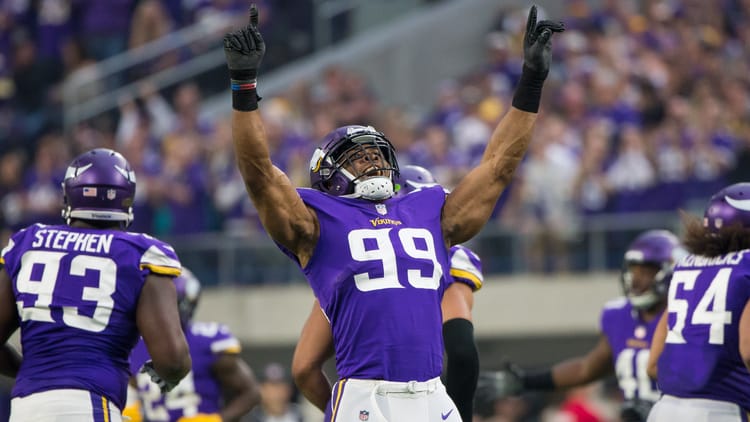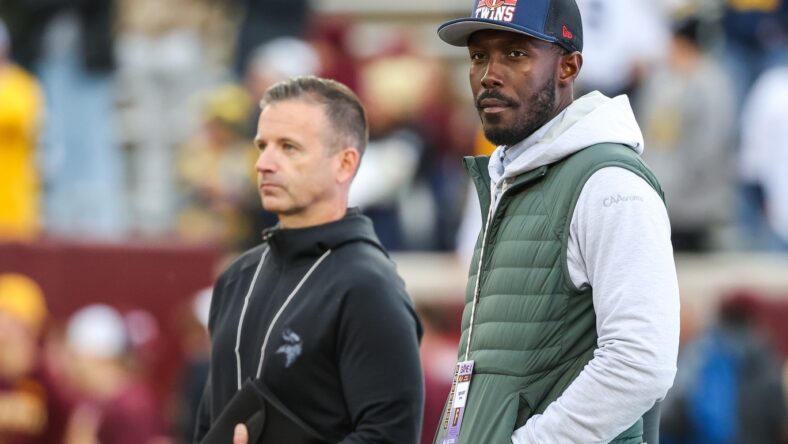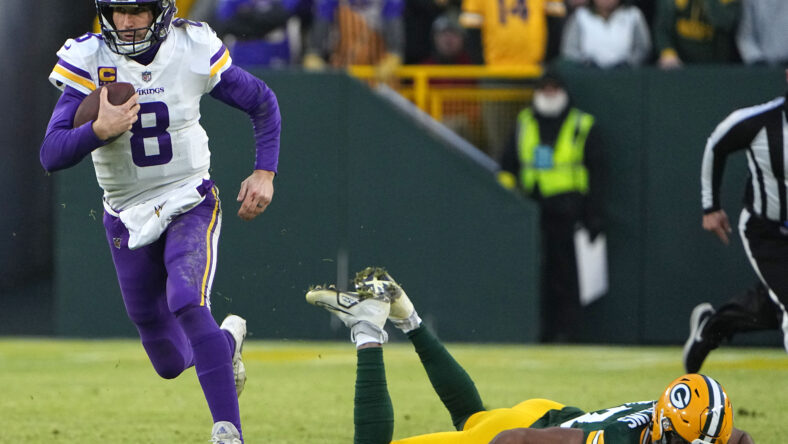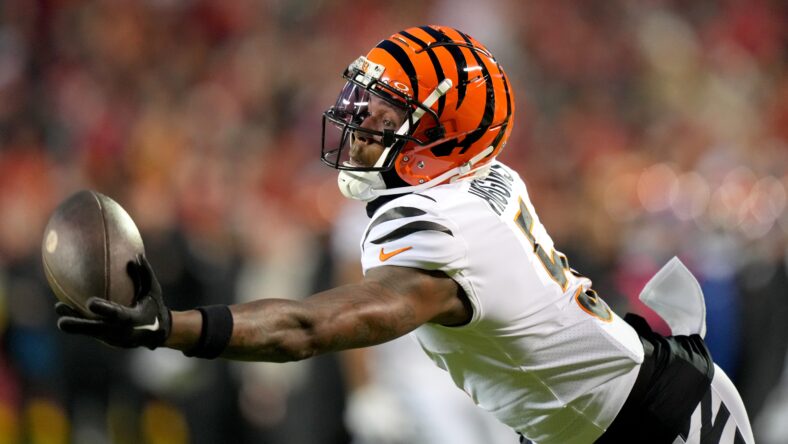Record Salary Cap Increase Good News for Vikings

As NFL GMs descend on Indianapolis for the NFL Combine this week, they are thrilled with the news of the biggest salary cap increase in league history–$30.6 million from $224.8 million to $255.4 million. It’s $10 million more than the $245 million expected in 2024.
Record Salary Cap Increase Good News for Vikings
As a former GM who usually dealt with cap increases of $1-2 million per year when the salary cap first came into existence under the 1993 Collective Bargaining Agreement, I’m envious of today’s GMs, who have so much more cap room to operate with. It’s mind-boggling to think the salary cap was $32 million in 1994, had increased to $133 million by 2014, and has almost doubled in the last 10 years.

Even the teams still over the cap, such as Buffalo, New Orleans, and Miami, are $10 million closer to the cap than they thought they’d be.
The Vikings’ cap room is now at $38.5 million per Spotrac (14th most in the league). The bad news for the Vikings is two of their division rivals rank in the top 10 in cap space and now have even more money to spend. The Bears are sitting third with $80.8 million, and the Lions have $65.7 million to rank seventh. The Packers are far down the list, with only $10.3 million in current cap space.
For GMs such as Kwesi Adofo-Mensah of the Vikings, it’s good timing to get this positive cap info since the Combine is where GMs ramp up contract negotiations with agents of their potential free agents and engage in quiet conversations about outside free agents (that is technically tampering until the March 11 start of the legal tampering period, but it’s rampant in Indy in the coming days).
The surge in cap money also makes it easier for teams to put the franchise tag on players during the current window that ends on March 5. The Vikings are unlikely to tag anyone this year since top free agents-to-be Kirk Cousins and Danielle Hunter have contract clauses preventing it.
The Vikings can clear approximately $10 million more by extending Justin Jefferson’s contract with a big signing bonus spread out over a projected six years that would lower his current 2024 cap number of $19.7 million under his fifth-year option.
Adofo-Mensah also can lower Cousins’ cap hit from $28.5 million in dead money if he signs elsewhere to a lesser amount if he re-signs in Minnesota.

The cap boom allows Adofo-Mensah to make a strong pitch to re-sign Cousins and Hunter, knowing he has more cap money than expected this year and in future years. That will help in a likely three-year deal (with the first two years guaranteed) for the Vikings QB. And to boost Hunter to the upper tier of edge rushers with a deal expected to be in the $25-27 million per year range.
This extra money also will aid the Vikings in re-signing their other key potential free agents, including OLB D.J. Wonnum, LB Jordan Hicks, G Dalton Risner, WR K.J. Osborn, DE Jonathan Bullard, WR Brandon Powell, TE Johnny Mundt, RB Cam Akers and K Greg Joseph. And allow them to dip in the outside free agent pool to add veteran help on defense (especially at cornerback) and perhaps on the offensive line.
The booming NFL revenues fueling the cap increase lead me to say so much for the naysayers such as Mark Cuban, who predicted the downfall of the NFL 10 years ago due to what he claimed was overexposure on TV. The NFL is growing revenue yearly with record TV ratings, almost universally sold-out stadiums, and booming international popularity (the NFL has expanded the regular season games overseas from London and Germany to a game in Brazil next season). And by the way, a year ago, Cuban backtracked when he said, “I was wrong.”
Around the NFL Observations:
1. The Bengals were the first team to utilize the franchise tag this year as they hit wide receiver Tee Higgins with the tag (at a one-year tender of $21.816 million). They have until mid-July to work out a long-term deal. Many more players will be hit with the franchise tag in the next week, including a strong possibility for ex-Gophers safety Antoine Winfield Jr. by Tampa Bay.

2. Combine week brings back many memories of mostly boring winter weeks in Indianapolis. It’s the most overhyped event on the NFL calendar, with the excessive coverage of workouts on NFL Network that don’t usually include the top projected players in the upcoming draft. Most of them only participate in physicals and interviews at the Combine and save their on-field workouts until Pro Days, when they feel more comfortable with the environment (such as a familiar track to run their 40-yard dash).
I have always encouraged draft-eligible players to participate in everything at the Combine as it’s one more opportunity to impress GMs, scouts, and coaches, and then they don’t put all their eggs in one basket at Pro Day.
From the teams’ perspective, the physicals and the interviews are the most critical elements at the Combine. It’s the first chance for teams to get medical info obtained by their team doctors and not filtered by the colleges. And the one-on-one interview sessions with the players are valuable to get a feel for their personalities.
Regarding the on-field testing, I always emphasized to our scouts and coaches that we needed to focus more on how a player performed on the field during his college career and less on how fast they ran the 40 or how many reps they did on the weight bench. After all, Jerry Rice and Cris Carter were 4.5 guys in the 40, and they wound up in the Hall of Fame. And John Randle went undrafted before I signed him after the draft because he weighed 240 during the pre-draft period. He built himself up to a 280-pound Hall of Fame defensive tackle.
Jeff Diamond is a former Vikings GM, former Tennessee Titans President and was selected NFL Executive of the Year after the Vikings’ 15-1 season in 1998. He now works for the NFL agent group IFA based in Minneapolis and does other sports consulting and media work along with college/corporate speaking. Follow him and direct message him on Twitter– @jeffdiamondnfl

You must be logged in to post a comment.